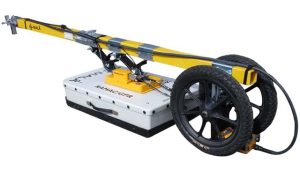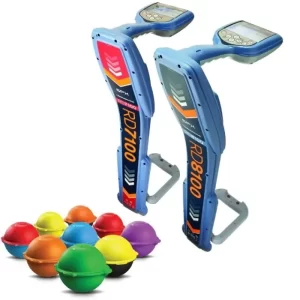

Introduction:
In the ever-expanding landscape of urban development, the accurate mapping of underground utilities has become paramount to ensure the safety and efficiency of infrastructure projects.
In this blog post, we summarize a comprehensive study conducted at the JUPEM Underground Utility Detection Equipment Calibration Laboratory in Kuala Lumpur, focusing on the accuracy, consistency, and reliability of two prominent underground utility mapping tools, Ground Penetrating Radar (GPR) represented by Mala ProEx, and Electromagnetic Locator (EML) embodied by RD8000.
Why is accurate mapping of underground utilities crucial in crowded urban areas with existing developments when planning new infrastructure?
As urban areas grapple with the challenges posed by densely packed developments, conflicts in subsurface space arise, necessitating precise underground utility mapping.
The need for such precision is especially critical when new infrastructures are planned, coexisting with a labyrinth of pre-existing utilities.
This study aims to evaluate the accuracy of GPR and EML in determining the location and depth of underground utilities, crucial for preventing accidents and ensuring the seamless execution of development projects.
How well does GPR (Mala ProEx) compare to EML (RD8000) in accurately determining the depth of underground utilities?
Results and Analysis: Statistical data analysis reveals that GPR (Mala ProEx) outshines EML (RD8000) in terms of accuracy.
The Root Mean Square Error (RMSE) values for lines A, B, and C indicate millimeter-level accuracy (3mm – 8mm) for GPR, contrasting with centimeter-level accuracy (18cm – 43cm) for EML.
This stark difference underscores the superior precision of GPR in determining the depth of underground utilities.
How reliable are the datasets from each equipment?
Furthermore, the reliability of the datasets is scrutinized. The study reveals that the depth values for all types of utilities exhibit minimal divergence.
Approximately 56% of the dataset acquired by EML boasts centimeter-level accuracy, while 44% achieves millimeter-level accuracy.
This suggests that both types of equipment provide reliable data for underground utility mapping, but GPR maintains a consistent edge in precision.
Conclusion of study:
In conclusion, this study underscores the efficacy of GPR (Mala ProEx) over EML (RD8000) for underground utility mapping.
The smaller RMSE values and the higher percentage of millimeter-level accuracy affirm GPR’s superior performance in providing accurate and reliable depth values.
As urban development continues to burgeon, adopting advanced technologies like GPR becomes imperative for ensuring the safety and success of infrastructure projects.
